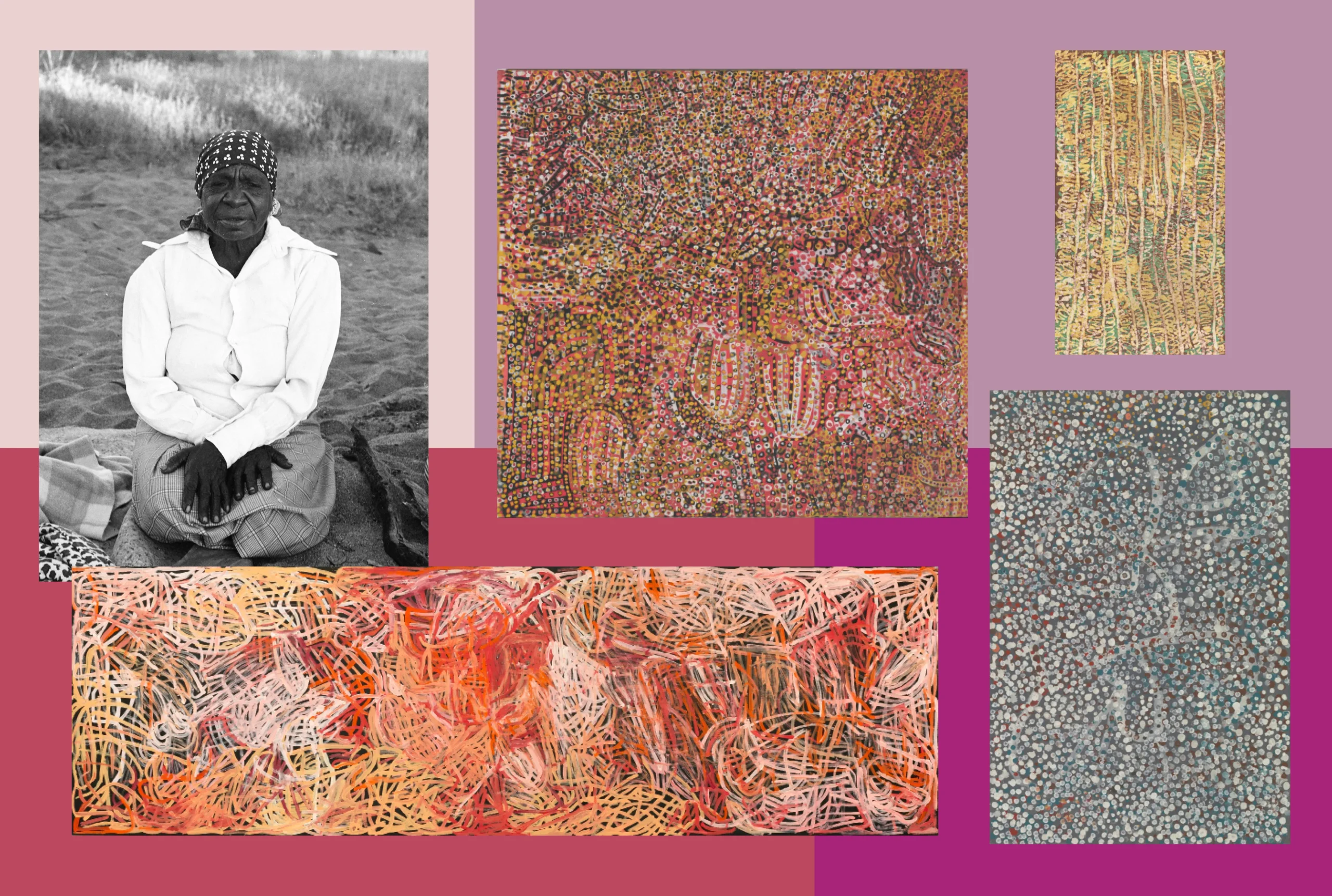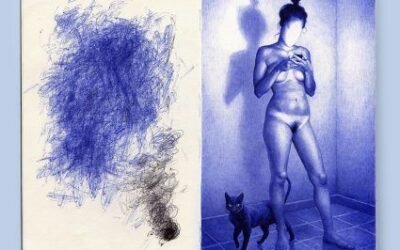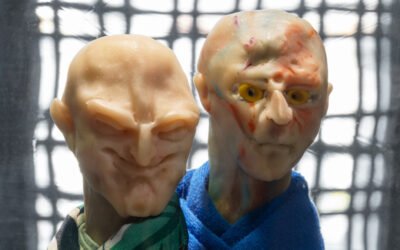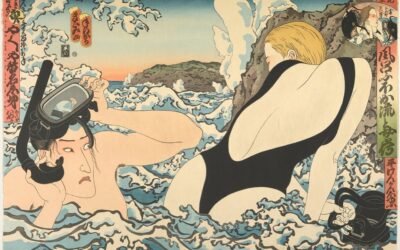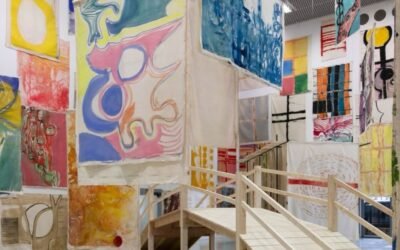In a photograph from 1994, the Australian artist Emily Kam Kngwarray sits cross-legged on the ground wearing a purple sweater and a black beanie.
Though the canvas stretching out before her is enormous, she is absorbed in a small section, carefully dabbing at the material with a long brush dipped in yellow paint. Kngwarray’s deep concentration in this image embodies the care she poured into all her work. “No gestural mark was ever a mistake,” says Kelli Cole, a curator of Aboriginal and Torres Strait Islander Art at the National Gallery of Australia. “There was intentionality in everything she painted.”
Born around 1914, before formal recordkeeping existed where she lived, Kngwarray was an Indigenous painter from Alhalker, a community in Utopia, a remote region in the Northern Territory of Australia. Having only picked up a paintbrush in her 70s, the Anmatyerr elder became one of the most renowned artists in the country, creating more than 3,000 paintings before she died in 1996.
This summer, the first major survey of her works to open in Europe will be exhibited at the Tate Modern following its presentation at the National Gallery of Australia early last year. The London show will bring her contributions to contemporary Indigenous art to a global audience. “This exhibition is an opportunity to educate the Tate’s audience on Indigenous culture and the diversity of who we are in Australia,” says Kimberley Moulton, co-curator of Kngwarray’s eponymous retrospective at the Tate alongside Cole. “There are over 250 different language groups in Australia, and I think this exhibition—while focusing on Kngwarray—allows us to speak to this much broader context of indigeneity.”
While Kngwarray’s name is often spelled “Emily Kame Kngwarreye,” the curators, both Aboriginal themselves, have chosen to use the version her community prefers. “There was a bit of controversy when the National Gallery first did it, but as I keep saying, it was changed [to the more commonly known spelling] in the dictionary in 2010, and her community wanted it changed back,” says Cole. “We just honored that spelling when we started collaborating with her community on this exhibition.”
At around 20 feet wide and 9 feet tall, Earth’s Creation I (1994), the piece Kngwarray labors over in that candid photograph from 1994, has become one of her most recognizable artworks. Not only was it featured in the main exhibition at the 56th Venice Biennale in 2015, put together by Nigerian curator Okwui Enwezor, but in 2017 it sold for $1.6 million (U.S.) at auction, a record sale for an Australian woman artist.
Like many of Kngwarray’s paintings, this piece is notable for its dynamic composition and striking use of color made through a technique the artist often used, which involved layering dots of acrylic paint on top of each other. “She cut her paintbrush in a particular manner so that when she dipped it in different colors, it layered them in a certain way,” Cole says. Her imagery reflects her deep connection to her Country, the term (with a capital C) used by Indigenous people in Australia to describe not just the land but the water, sky, plants, animals, and even stories, songs, and spirits connected to their area, in this case Alhalker.
While it may appear subtle to those less familiar with Indigenous art and culture, much of Kngwarray’s work represents a very distinct part of her Country. Kngwarray and many other artists, for example, incorporated the pencil yam (or anwerlarr in Kngwarray’s native language) into their work. To Anmatyerr people, anwerlarr is not only an essential food source but a common subject in “Dreamtime” or “Dreaming,” terms used to describe Aboriginal creation stories and spiritual and cultural beliefs.
“Underneath those dots, a yam is always represented because that yam is so important to her,” Cole explains, noting that Kngwarray’s name, Kam, given to her by her grandfather, directly references the yam seed. (Her first name, Emily, was assigned to her in her teens by a “whitefella.”) “Sometimes you can see [the yam] revealed in the underlayers of the paintings,” Cole adds. Some paintings, such as Anwerlarr Anganenty (“Big Yam Dreaming”) (1995), depict the yam’s underground network with fluid lines—in this case, white ones against a black background.
Before taking up acrylic painting, Kngwarray was introduced to batik alongside many women in her Country, later becoming a founding member of the Utopia Women’s Batik Group. She transitioned to acrylic painting on canvas in 1988 after an initiative called “A Summer Project” by the Central Australian Aboriginal Media Association (CAAMA) brought 100 blank canvases and acrylic paints to Utopia.
Like many of her peers, Kngwarray’s paintings often drew inspiration from her homeland’s plants and animals. She is widely quoted as saying in 1990 that she painted a “whole lot,” listing very distinct aspects of her Country. “Arlatyeye (pencil yam), Arkerrthe (mountain devil lizard), Ntange (grass seed), Tingu (dingo pup), Ankerre (emu), Intekwe (plant that emus like), Antwerle (green bean), and Kame (yam seed),” she said. “That’s what I paint: whole lot.”

